Interview
Interview: Jairo Zaldua and Nicola Green
In conversation with Jairo Zaldua and Nicola Green, a collaborative partnership who are part of a co-operative called East London Printmakers.
Working from their studio in Mile End, as part of Acme, they also undertake freelance mobile screen printing workshops. Jairo studied Fine Art Printmaking at the University of Hertfordshire and Nicola studied at the Roehampton Institute.
Can you talk about your journey into or interest the arts?
We have always been intrigued by the arts. Art, film, literature and music have always been integral to our lives and our sense of purpose. It was and still is our ‘get out of jail free card’.
Although we initially exhibited as separate artists, it seemed like a natural progression as a couple, working through projects together. We discovered very quickly how advantageous it was to bring our ideas together.
As our practice evolved, we became fascinated with alternating mental states as depicted in literature and the arts; the boundary between what is real and imagined. We also like interacting with communities to provide expressive and immersive experiences.
We began with a group collaboration based on ‘The Yellow Wallpaper’ by Charlotte Perkins Gilman, then collaborated with a Japanese dance artist on a project based on Nikolai Gogol’s ‘Diary of a Madman’. This eventually led to one of our current projects ‘Imaginary Friends’.
Do you use a sketchbook? I’m interested in what a sketchbook means to you and your work?, or how people develop their ideas.
Although we do use a sketchbook on occasion, particularly for mark making and very rough ideas, most of our documentation tends to be on random pieces of scrap paper, paper stencils, collage and digital montages.
We think of the sketchbook as an open body of working ideas, an archive to revisit and as a catalyst for new thought.
We have (surprisingly) discovered that some of our earlier sketches or montages can be reconfigured and these have fed into and inspired our current projects.
How does the process of collaboration work within your practice? Are there positives and negatives to this?
It’s definitely more of a unity as we endeavour to pool our resources together. One of us might make the initial marks, but we will quite rapidly swap roles in the process. It’s really an instinct and what feels right. We have always loved collaborations because they expand and challenge us through to the limits of our medium. We have also worked with performers and installation projects. Working with dance artist Katsura Isobe on ‘Fragments’ – a project based on Nikolai Gogol’s ‘Diary of a Madman’, we learnt a lot from observing each other’s methodology and disciplines.
Can you talk about this and influences upon your work or recurrent themes?
Our influences are quite diverse and wide-ranging. From expressionistic and surrealistic artists such as Munch, Odilon Redon, Kurt Schwitters, Egon Schiele, Klimt, Franz Marc, Dora Carrington to Anselm Kiefer, Chiharu Shiota, David Lynch, Jean Cocteau and the Chapman Brothers. We are also influenced by contemporary dancers and choreographers such as Pina Bausch, William Forsythe, Marina Abramović and James Thiérrée.
Printmakers such as Rauschenberg were inspirational. He has a very experimental approach to the medium.
We also like interacting with communities to provide expressive and immersive experiences. This eventually led to one of our current projects ‘Imaginary Friends’.
Since the lockdown, we decided to reopen our Imaginary Friends project but with a different slant. Initially, it was just going to be the two of us involved, but we decided to expand on this virtual collaboration and include Elin Doyle (actor/video artist), Jasmine Kahlia (Multi-disciplinary artist) and Tobias de Zaldua (soundscapes).
We asked the public to write a brief description of their idealised imaginary friend to accompany them during this period of isolation. Together, we wanted to create a sequence of images and creativity all acting as a visual response of their descriptions. We intend to run the project until the lockdown ends, though we may extend it. We converted our small kitchen table into a mini art studio for this project.
Can you talk about your process of working? How do you work, how often, is there a particular pattern?
Prior to lockdown, we would use our studio on a regular basis as well as creating ideas at home, but at present we have set up our kitchen table as a mini print studio. With the absence of the usual equipment and facilities, we have had to work very much within our restrictions. We also create collages and they are more adaptable.
Everything in our practice is very interrelated and the main pattern that is most apparent is that there is a strong element of chance and experimentation.
Do you find the process of creating work relaxing or therapeutic? I’ve become increasingly interested in the relationship of the sketchbook and the work to the artist.
The process of creating our artwork has its definite moments of being therapeutic and we do feel sometimes transported, as well as mentally elevated, as if subconsciously guided. However, there are times when it also becomes very intense; time pressures, and the fragility of some of our prints, thus all emotions are present in the process. As printmakers who favor taking risks, after the build-up of layers, it can be that last print out that can make or break the image.
With reference to sketchbooks; we often create a few versions of the same image which allows us to experiment with our working ideas, therefore enabling us to push our concepts further whilst maintaining the original template.
Sketchbooks and sketched ideas are vital to allowing us to make mistakes and progress.
Installation images courtesy of Katsura Isobe, dance artist and Gigi Giannella, photographer.

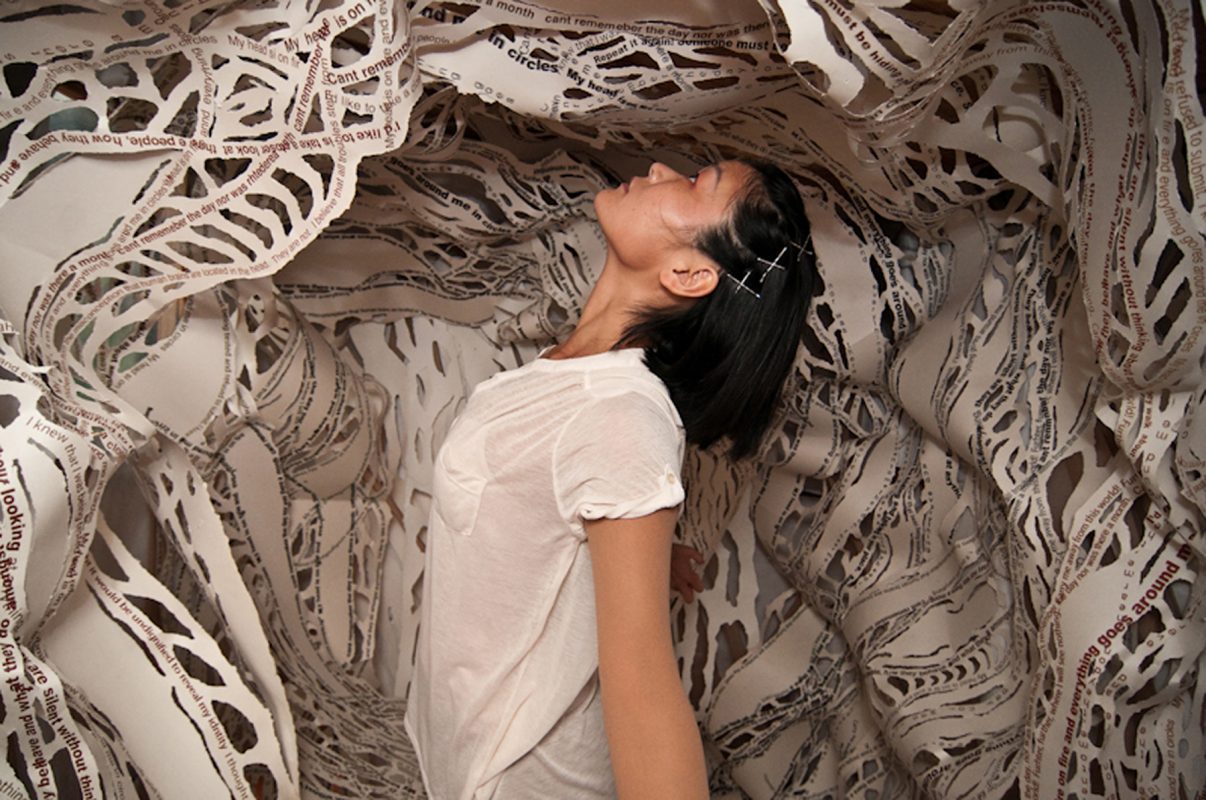
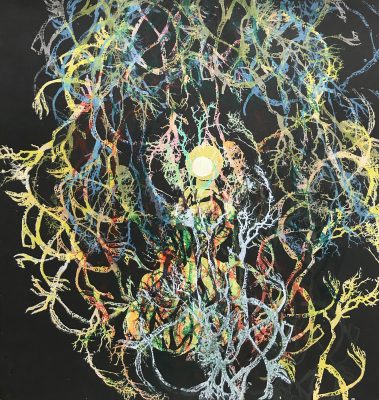
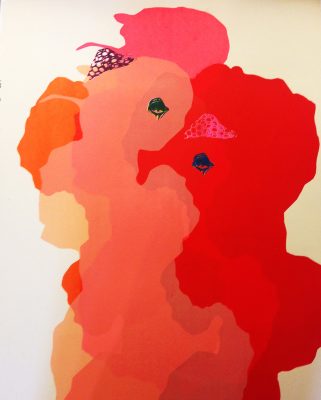
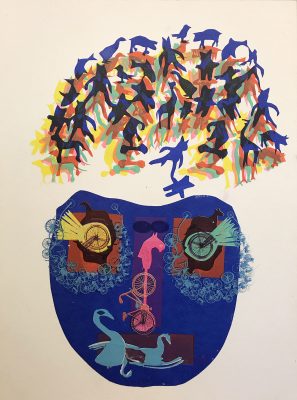
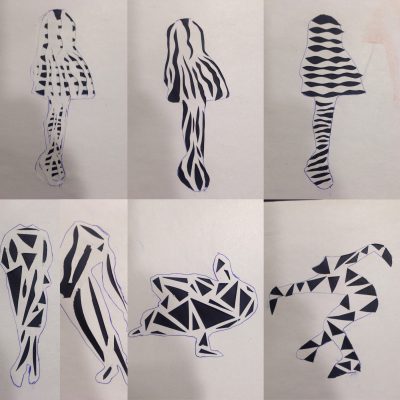
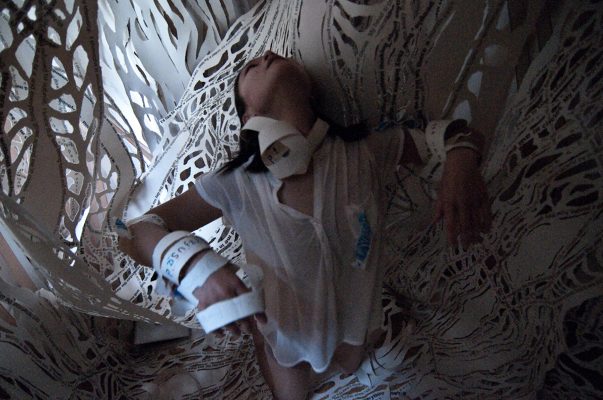
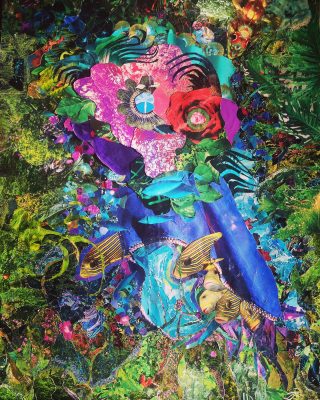
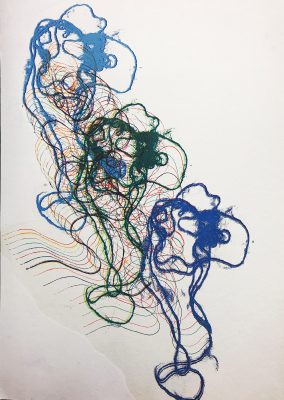
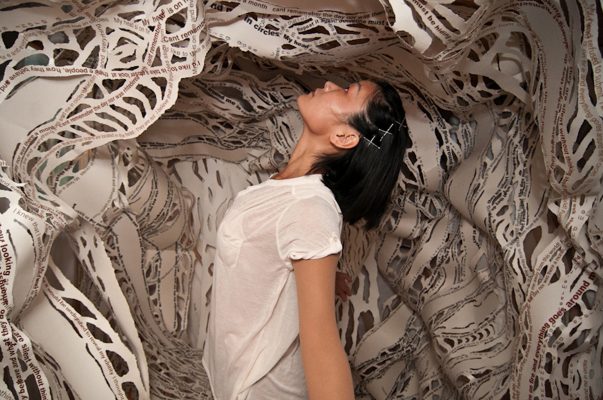
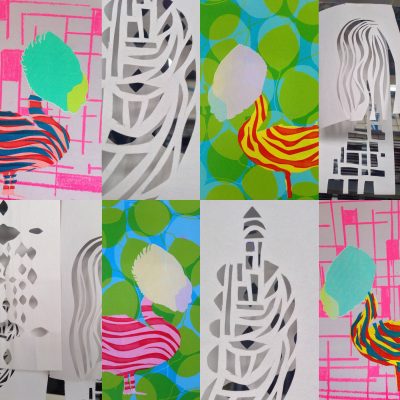
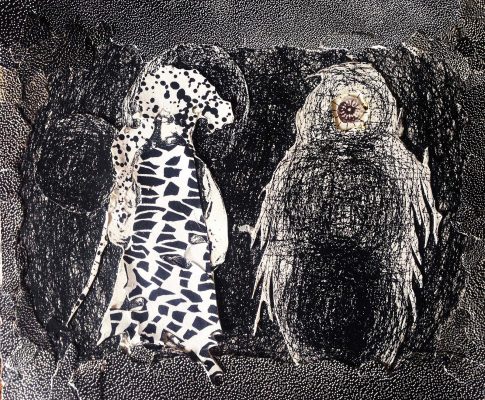
Great interview-interesting, illuminating
Glad you enjoyed the interview John.
Really proud to have known them both for over 20 years.
Looking at their artwork as part of this interview just makes me realise how special and unique their art is.
I really wish them to have international success actually.